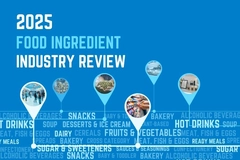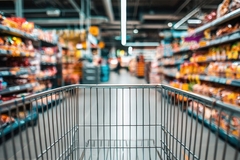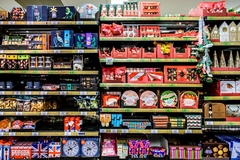
- Industry news
Industry news
- Category news
Category news
- Reports
- Key trends
- Multimedia
Multimedia
- Journal
- Events
- Suppliers
- Home
- Industry news
Industry news
- Category news
Category news
- Reports
- Key trends
- Multimedia
Multimedia
- Events
- Suppliers
Will new labeling for NoLo drinks tempt consumers to ditch alcohol and choose no and low substitutes?

03 Oct 2023 --- The UK government is reviewing the threshold for labeling a beverage as “alcohol-free” as part of a package of plans geared toward decreasing the appetite for alcohol. Officials are also encouraging industry to formulate NPD that caters to the growing NoLo (no and low alcohol) market, in line with trends being led by younger generations who seek alcohol substitutes.
The government is looking to clear the way for the market promotion and sales of NoLo alternatives over alcoholic drinks, making them more available, acceptable and affordable.
This comes as Millennials and Gen-Z are bucking previous generations desire for alcohol and big brands innovate NoLo drinks.

According to the Office for Health Improvement and Disparities, UK, the consultation only applies to drinks with an alcoholic strength of 1.2% alcohol by volume (ABV) or less that are marketed as alcohol substitute drinks.
“The government’s policy aim is to reduce alcohol consumption and associated harm among people who regularly drink above the UK chief medical officers’ (CMO) guideline of 14 units per week.”
The policy wants “to gather views and evidence on options for updating the voluntary guidance on labeling of NoLo products.” It expects the alcohol industry to prove how these changes, if introduced, will impact its ability to increase NoLo products’ availability and promotion as substitutes for alcoholic drinks.
Alcohol-free drinks in England presently have an ABV content of less than 0.05%, with the low alcohol variants not exceeding 1.2%. They are formulated to imitate the taste and experience of standard-strength alcoholic drinks and include NoLo beers, spirits, ciders and wine-based drinks.
Can health warning labels help?
The office flags that consuming alcohol above the CMO’s low-risk guidelines significantly increases consumers’ susceptibility to ill health, poorer quality of life and premature death.
Alcohol misuse also has social and economic impacts, including costs associated with crime, harm to the family and others, healthcare pressures and lost productivity in the workplace.
 Improved labeling can be a vital means to influence consumers and enhance their trust on labels.In such a scenario, improved labeling can be a vital means to influence consumers and ensure that consumers can trust information found on labels and make informed choices about their diet and health.
Improved labeling can be a vital means to influence consumers and enhance their trust on labels.In such a scenario, improved labeling can be a vital means to influence consumers and ensure that consumers can trust information found on labels and make informed choices about their diet and health.
According to the WHO, health warning labels on alcoholic beverages help increase awareness and ensure consumers make informed decisions.
According to experimental studies, including percentage ABV on the label of low-alcohol beverages can lead to greater consumption of these products than verbal descriptors alone (such as super low).
Wine, a popular alcoholic drink, has been a subject of recent reforms, with the UK Department for Environment, Food and Rural Affairs (Defra) recently running a consultation on proposed changes to amend the definition of wine to permit wine to be produced and marketed to a minimum of 0% ABV.
The EU Regulation 1308/2013 states that products similar to wine cannot be described as wine if their alcohol content is below 8.5% or 4.5% ABV, depending on their designation.
Instead, they must use terms such as "wine-based drink" and be marketed per general food and drink labeling rules. Consequently, products cannot be labeled “low alcohol wine” or “alcohol-free wine.”
But consumers do not always understand such labels, with Defra-commissioned qualitative research on NoLo alcohol labeling highlighting that some consumers interpret “wine-based drink” as an alcoholic wine that has been mixed with other ingredients.
Subsequently, changing labels could be a potential way to help consumers understand the product and increase their confidence in buying NoLo wine substitutes.
In other labeling news, earlier this year, Ireland announced plans to introduce some of the strictest alcohol labeling laws in May 2026, requiring warnings about cancer, drinking while pregnant and liver disease risks, which received backlash from industry, EU countries and some overseas World Trade Organization members over potential impacts on market dynamics and trade.
The price factor
Price is often seen as a barrier to the consumption of NoLo drinks, which are highly price-responsive and come cheaper when purchased in bulk.
NoLo formulators argue that such drinks are more expensive to manufacture, owing to money outflow on innovation, machinery to extract alcohol and investment in high-quality ingredients that replicate the taste of alcohol. Further, since alcohol is a natural preservative, NoLo drinks must undergo more processing to be contamination-free.
.jpg) NoLo products are still a minority drink compared to standard alcohol.“There is also an economy of scale, with NoLo products still a minority drink compared to standard alcohol,” notes the office.
NoLo products are still a minority drink compared to standard alcohol.“There is also an economy of scale, with NoLo products still a minority drink compared to standard alcohol,” notes the office.
The government is currently engaging with the alcohol industry to understand whether the potential changes to labeling guidance it is consulting on could support innovation in the NoLo market and reduce production costs.
In July, the UK government tried to steer consumers toward low-alcohol drinks (below 3.5% ABV) subject to a new lower rate of £9.27 (US$11.92) per liter – with alcohols with less than 1.2% ABV content being free of the duty, in a bid to battle inflation.
However, last month, the UK experienced an inflation drop at its lowest since Russia’s invasion of Ukraine in February last year, which raised food and oil costs.
Increasing NoLo drinks’ consumer adoption
Notably, reports suggest that consumers find it hard to find NoLo options in pubs and bars, off-licences, restaurants, corner shops and nightclubs and turn to online retailers and supermarkets due to better availability.
One way to encourage NoLo products could be better marketing to enhance consumer knowledge about the varieties available. Until now, it is seen that NoLo products have been marketed as compliments to prevalent alcohol consumption rather than as substitutes.
Last year, the Advertising Standards Authority removed a restriction prohibiting ads from suggesting that a low alcohol product’s lower alcohol content was preferable if that ad also featured a standard alcoholic drink.
“Removal of this restriction has given advertisers more freedom to promote low-strength drinks in a way that encourages consumers to choose them over standard alcoholic drinks,” says the office.
This consultation forms part of the UK government’s smarter regulation program of regulatory reform measures that began in May.
By Insha Naureen










